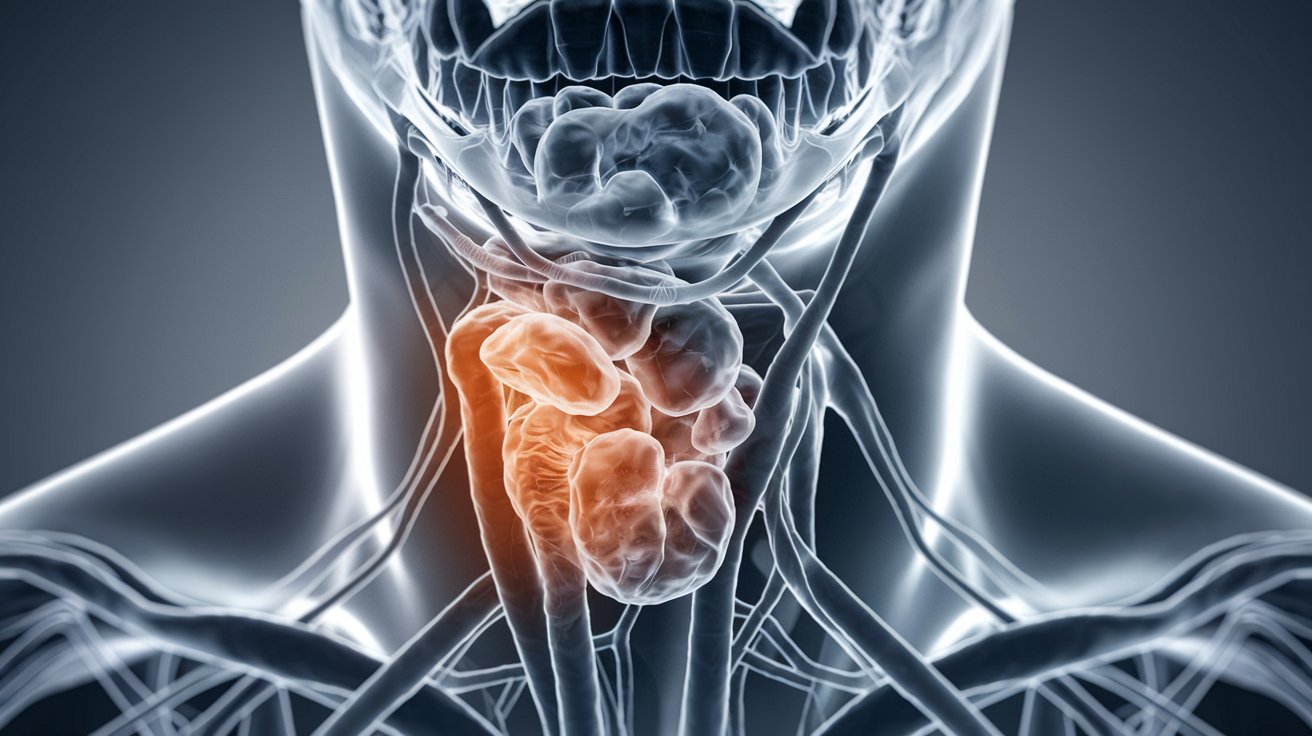
What happens when the tiny structures called cilia in our bodies don't work properly? Cilia are microscopic, hair-like structures that play a crucial role in keeping our respiratory system clean, among other functions. When they don't coordinate well, it leads to a condition known as ciliary discoordination. This can cause a range of health issues, from chronic respiratory infections to problems with organ placement. Understanding ciliary discoordination is essential for managing conditions like Primary Ciliary Dyskinesia (PCD) and other related disorders. In this article, we'll explore 25 key facts about ciliary discoordination, shedding light on its mechanisms, symptoms, and the latest research.
Key Takeaways:
- Cilia are tiny hair-like structures on cells that help with movement and sensing. When they don't work properly, it can cause health issues like respiratory infections and even affect vision.
- Understanding ciliary disorders like PCD involves genetic testing and techniques to evaluate ciliary function. While there's no cure, treatments can help manage symptoms and improve quality of life.
What Are Cilia?
Cilia are tiny, hair-like structures on the surface of eukaryotic cells. They play essential roles in various cellular functions, including movement and sensing the environment.
-
Definition of Cilia: Cilia are microtubule-based structures that protrude from the surface of eukaryotic cells. They are composed of a central axoneme surrounded by a ciliary membrane and are involved in various cellular functions, including sensing the environment and signaling.
-
Types of Cilia: There are two main types of cilia: primary cilia and motile cilia. Primary cilia are non-motile and are involved in sensory functions, while motile cilia are responsible for movement and are found in respiratory epithelial cells, among other locations.
Understanding Primary Ciliary Dyskinesia (PCD)
Primary ciliary dyskinesia (PCD) is a genetic disorder that affects the structure and function of cilia. This condition leads to various health issues due to impaired ciliary movement.
-
Primary Ciliary Dyskinesia (PCD): Primary ciliary dyskinesia (PCD) is a genetic disorder characterized by abnormalities in ciliary structure and function. It is an autosomal recessive disorder that affects both primary and motile cilia, leading to impaired mucociliary clearance and various clinical manifestations.
-
Clinical Manifestations of PCD: The clinical manifestations of PCD include chronic otitis media, transient hearing loss/speech delays, nasal congestion, chronic sinusitis, recurrent lower respiratory tract infections, bronchiectasis, male infertility, and defects in organ laterality (situs inversus).
-
Mechanisms of PCD: PCD is caused by mutations in more than 20 different genes that encode proteins essential for ciliary structure and function. These mutations lead to defects in the dynein arms, radial spokes, and other components of the axoneme, resulting in ciliary discoordination.
How Cilia Work
Cilia have a complex structure that allows them to perform their functions effectively. Understanding their structure helps in grasping how their dysfunction can lead to diseases.
-
Ciliary Structure and Function: Cilia have a complex structure composed of microtubules, dynein arms, and radial spokes. The dynein arms generate force for ciliary movement, while the radial spokes help to regulate this movement. Abnormalities in these components can lead to ciliary discoordination.
-
Role of Dynein Arms in Cilia: Dynein arms are critical for ciliary movement. They are composed of multiple subunits and are responsible for generating the force necessary for ciliary beat. Mutations in genes encoding dynein arm subunits can lead to PCD and other ciliary disorders.
Impact on Health
Ciliary dysfunction can lead to various health issues, particularly affecting the respiratory system and other areas where cilia play a crucial role.
-
Impact on Mucociliary Clearance: Mucociliary clearance is the process by which mucus and debris are removed from the respiratory tract. In PCD, impaired ciliary function leads to reduced mucociliary clearance, resulting in chronic respiratory infections and other complications.
-
Ciliary Dysfunction in Asthma: Ciliary dysfunction is also observed in asthma. Studies have shown that cilia in asthma patients exhibit reduced beat frequency, disorganized beat direction, and increased dyskinetic and immotile cilia compared to healthy controls.
Diagnosing Ciliary Disorders
Diagnosing ciliary disorders like PCD involves various techniques to evaluate ciliary function and identify genetic mutations.
-
Diagnostic Techniques for PCD: Diagnosing PCD involves a combination of clinical evaluation, imaging studies, and genetic testing. Techniques such as nasal nitric oxide measurement, ciliary beat frequency analysis, and ultrastructural examination of cilia can help confirm the diagnosis.
-
Genetic Diagnosis of PCD: Genetic diagnosis is crucial for PCD. Exome sequencing and other genetic testing methods can identify mutations in genes associated with PCD. This information can help in predicting the severity of the disorder and guiding treatment.
Managing Ciliary Disorders
While there is no cure for PCD, various treatments can help manage its symptoms and improve the quality of life for affected individuals.
- Treatment Options for PCD: There is no cure for PCD, but various treatment options can help manage its symptoms. These include antibiotics for respiratory infections, bronchodilators for bronchiectasis, and assisted reproduction techniques for male infertility.
Ciliary Dysfunction in Other Diseases
Ciliary dysfunction is not limited to PCD. It is also observed in other diseases, affecting various organs and systems.
-
Ciliary Dysfunction in Other Diseases: Ciliary dysfunction is not limited to PCD. It is also observed in other diseases such as amyotrophic lateral sclerosis (ALS) and Alzheimer's disease. In ALS, ciliary dysfunction contributes to the degeneration of motor neurons, while in Alzheimer's disease, it may play a role in the pathogenesis of the disorder.
-
Wnt Signaling Pathways and Cilia: Wnt signaling pathways are critical for various cellular processes, including development and disease. Recent studies have shown that cilia play a role in Wnt signaling, particularly in the context of neurodegenerative diseases like Parkinson's and Alzheimer's.
-
Primary Cilia in Brain Disorders: Primary cilia are involved in various brain disorders, including Parkinson's disease and Alzheimer's disease. They play a role in Sonic hedgehog-mediated dopaminergic neurogenesis and other signaling pathways critical for brain health.
Ciliary Muscle and Vision
Ciliary muscles play a crucial role in vision, particularly in focusing and accommodation.
- Ciliary Muscle Morphology: Ciliary muscles are involved in accommodation and axial ametropia. Studies using anterior segment optical coherence tomography (AS-OCT) have shown that ciliary muscle length and thickness change with accommodation, particularly in the anterior portion.
Vitamin D and Ciliary Function
Vitamin D has been linked to ciliary function, suggesting potential therapeutic implications for ciliary disorders.
- Vitamin D and PCD: Vitamin D has been implicated in the pathogenesis of PCD. Research suggests that vitamin D deficiency may exacerbate ciliary dysfunction, highlighting the potential role of vitamin D supplementation in managing PCD symptoms.
Cilia in Development
Cilia play a critical role in embryogenesis, particularly in determining organ laterality.
- Ciliary Dysfunction in Embryogenesis: Cilia play a critical role in embryogenesis, particularly in determining organ laterality. In PCD, the abnormal rotary motion of cilia leads to defects in organ placement, resulting in situs inversus.
Techniques for Evaluating Ciliary Function
Various techniques are used to evaluate ciliary function, helping in the diagnosis and understanding of ciliary disorders.
-
Ciliary Beat Frequency Analysis: Ciliary beat frequency analysis is a technique used to evaluate ciliary function. This method involves measuring the frequency of ciliary beats and can help diagnose ciliary disorders like PCD.
-
Ultrastructural Examination of Cilia: Ultrastructural examination of cilia involves studying the internal structure of cilia using transmission electron microscopy. This technique can reveal abnormalities in ciliary structure, such as microtubular disorganization, which are characteristic of PCD.
Ciliary Dysfunction and Disease Progression
Ciliary dysfunction can contribute to the progression of various diseases, affecting multiple organs and systems.
-
Ciliary Dysfunction in Asthma Pathophysiology: In asthma, ciliary dysfunction contributes to the pathophysiology of the disease. Studies have shown that cilia in asthma patients exhibit reduced beat frequency, disorganized beat direction, and increased dyskinetic and immotile cilia compared to healthy controls.
-
Ciliary Discoordination and Disease Progression: Ciliary discoordination is associated with disease progression in various conditions. For example, in PCD, ciliary dysfunction leads to chronic respiratory infections and other complications, while in ALS, it contributes to motor neuron degeneration.
Ciliary Function and Mucus
The relationship between ciliary function and mucus characteristics is crucial for understanding ciliary disorders.
- Ciliary Function and Mucus Characteristics: Ciliary function is closely linked to mucus characteristics. In asthma, changes in mucus play a role in ciliary dysfunction, while in PCD, alterations in cilia structure and function contribute to reduced mucociliary clearance.
Research and Future Directions
Ongoing research aims to better understand ciliary discoordination and develop new treatments for ciliary disorders.
-
Ciliary Coordination in Cell Culture: Ciliary coordination can be evaluated in cell culture. Studies have shown that ciliary coordination appears normal in fresh biopsy samples but reverts to abnormal after culture, suggesting that some growth factors might be absent in the suspension medium.
-
Future Research Directions: Future research directions in ciliary discoordination include exploring the role of vitamin D in PCD, developing new diagnostic techniques for ciliary disorders, and investigating the potential therapeutic targets for ciliary dysfunction in various diseases. Additionally, understanding the molecular mechanisms underlying ciliary discoordination will be crucial for developing effective treatments for these disorders.
Understanding Ciliary Discoordination
Ciliary discoordination is a complex issue with significant health implications. Cilia are tiny structures that play crucial roles in our bodies, from clearing mucus in the respiratory tract to aiding in sensory functions. When these cilia don't work properly, it can lead to conditions like Primary Ciliary Dyskinesia (PCD), which causes chronic respiratory problems, sinusitis, and even infertility. Genetic mutations often lie at the heart of these issues, disrupting the normal function of cilia.
Diagnosing ciliary disorders involves various techniques, including genetic testing and ciliary beat frequency analysis. While there's no cure for PCD, treatments like antibiotics and bronchodilators can help manage symptoms. Research continues to explore new diagnostic methods and potential treatments, offering hope for those affected. Understanding the mechanisms behind ciliary discoordination is key to developing better therapies and improving the quality of life for patients.
Frequently Asked Questions
Was this page helpful?
Our commitment to delivering trustworthy and engaging content is at the heart of what we do. Each fact on our site is contributed by real users like you, bringing a wealth of diverse insights and information. To ensure the highest standards of accuracy and reliability, our dedicated editors meticulously review each submission. This process guarantees that the facts we share are not only fascinating but also credible. Trust in our commitment to quality and authenticity as you explore and learn with us.


